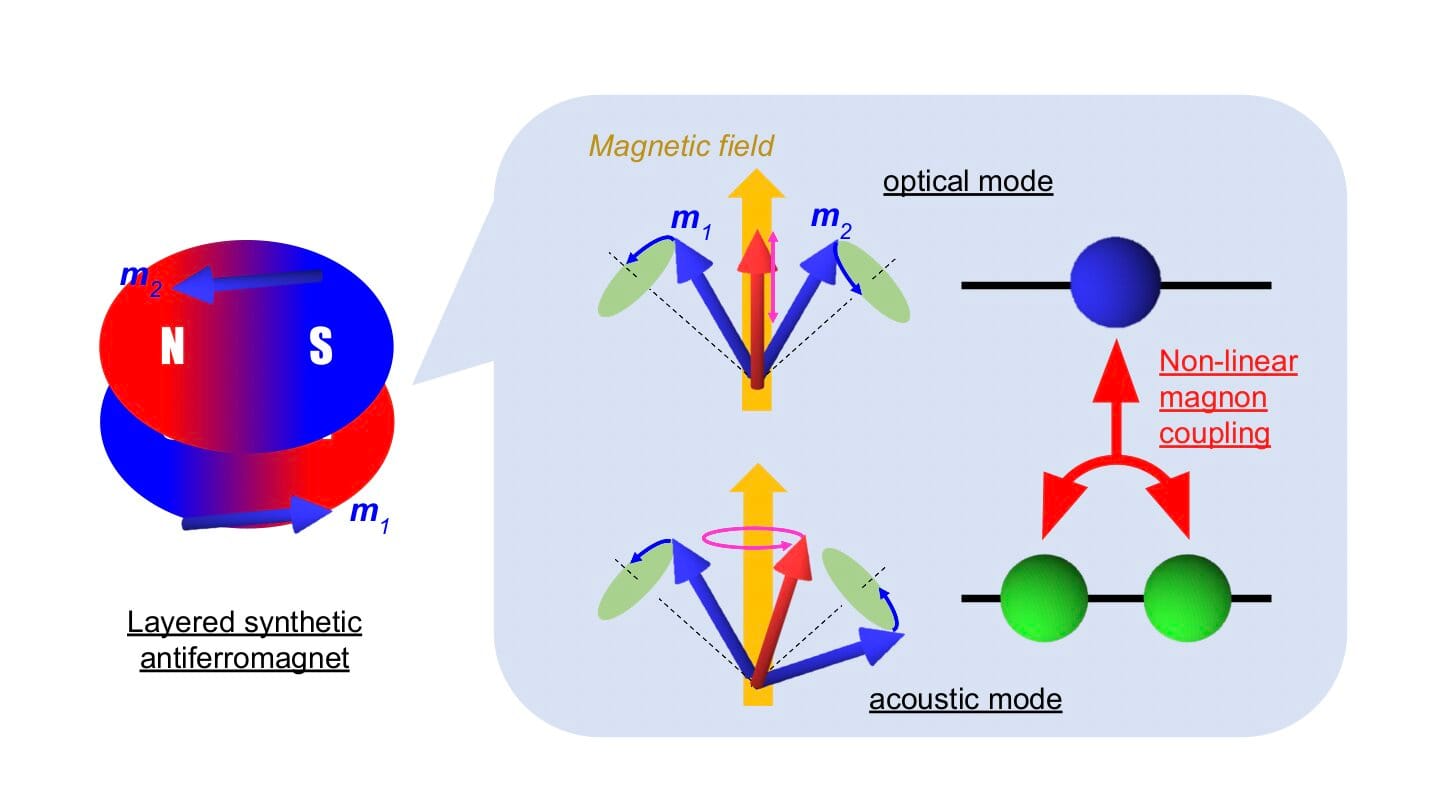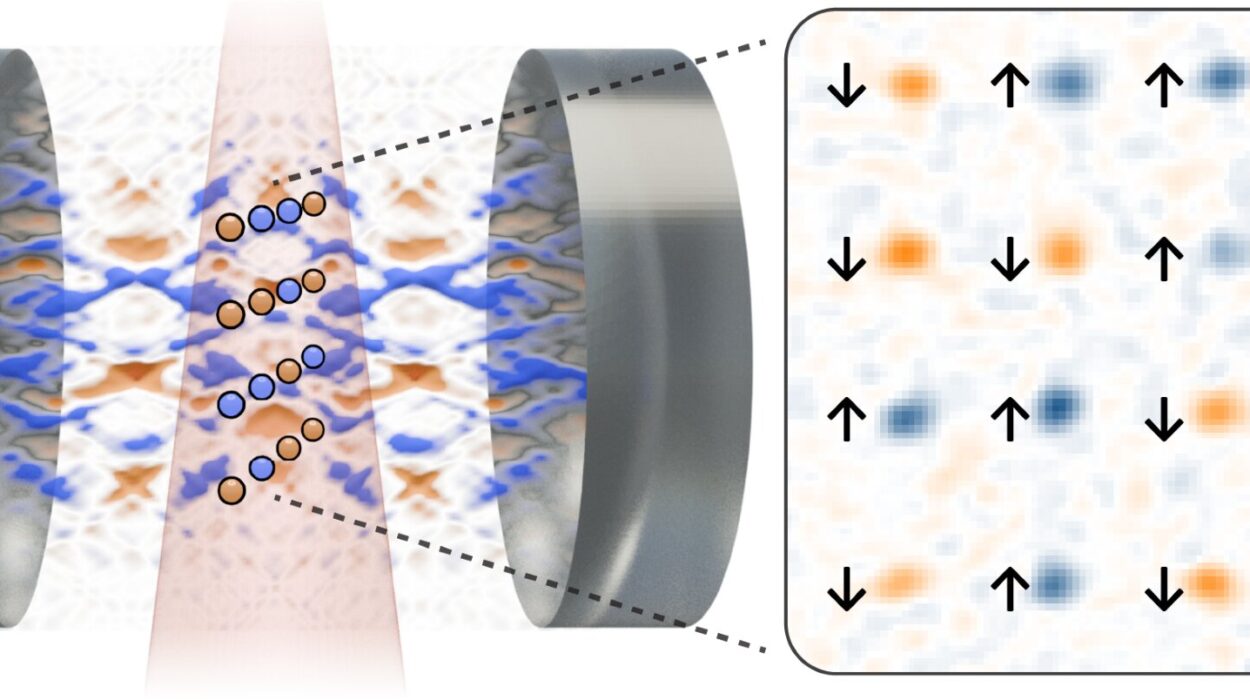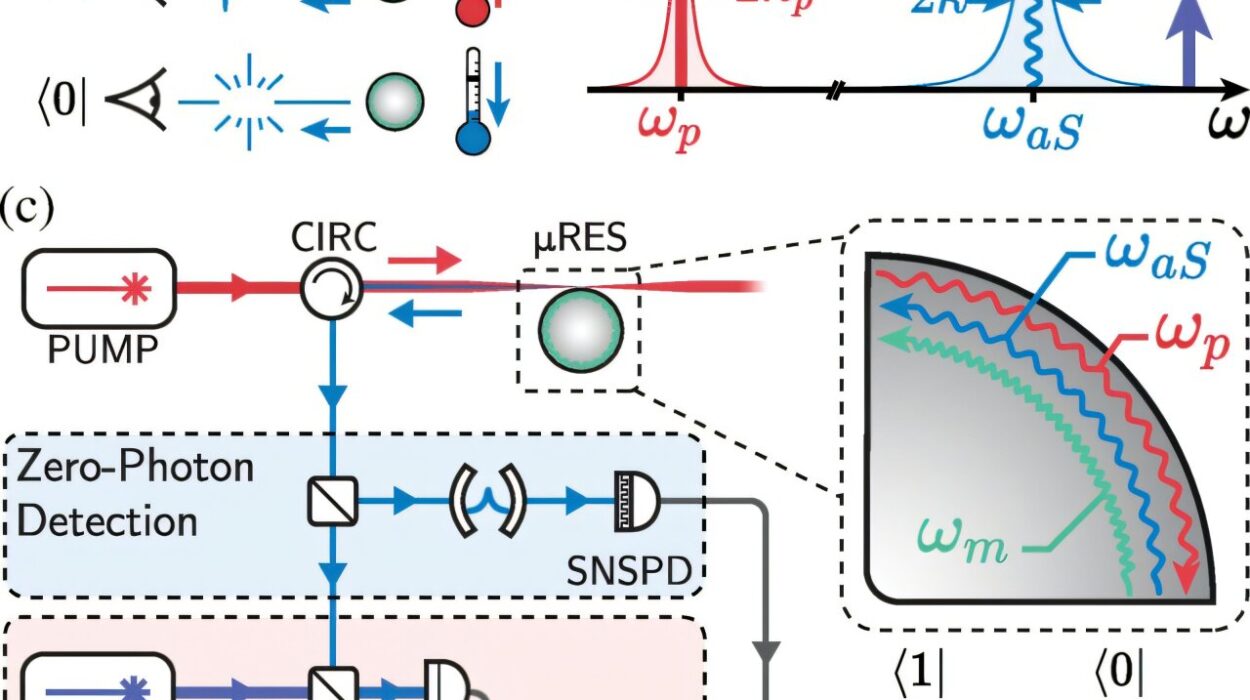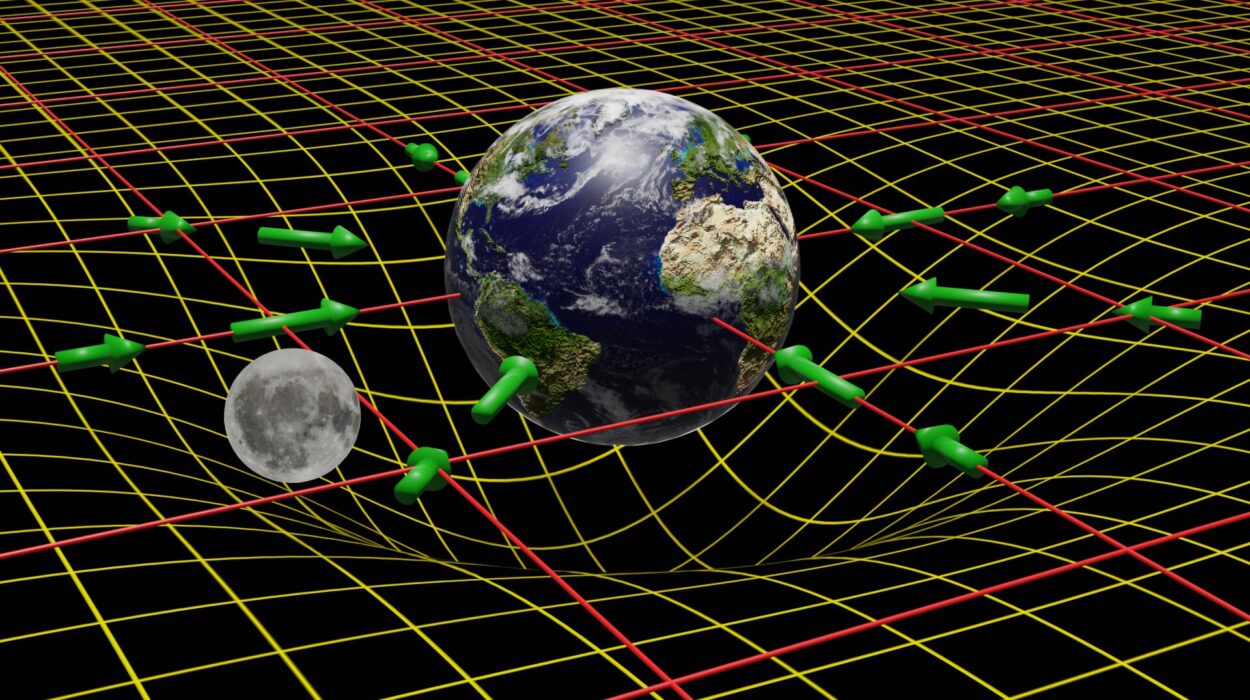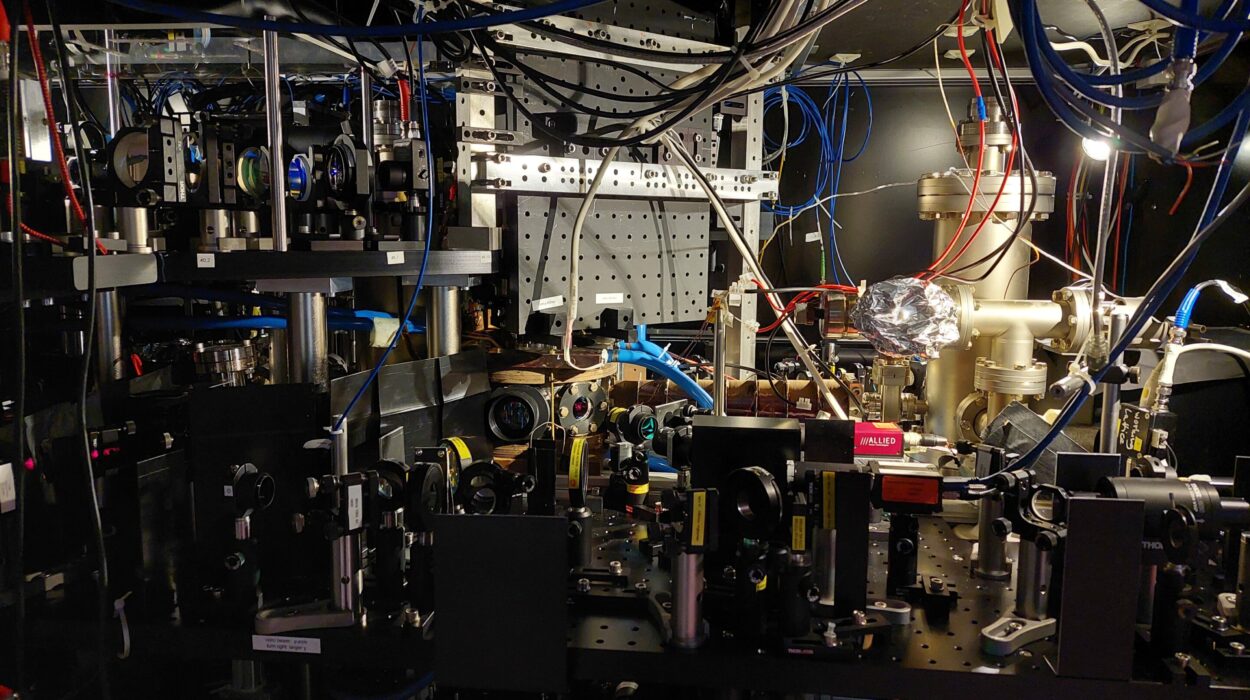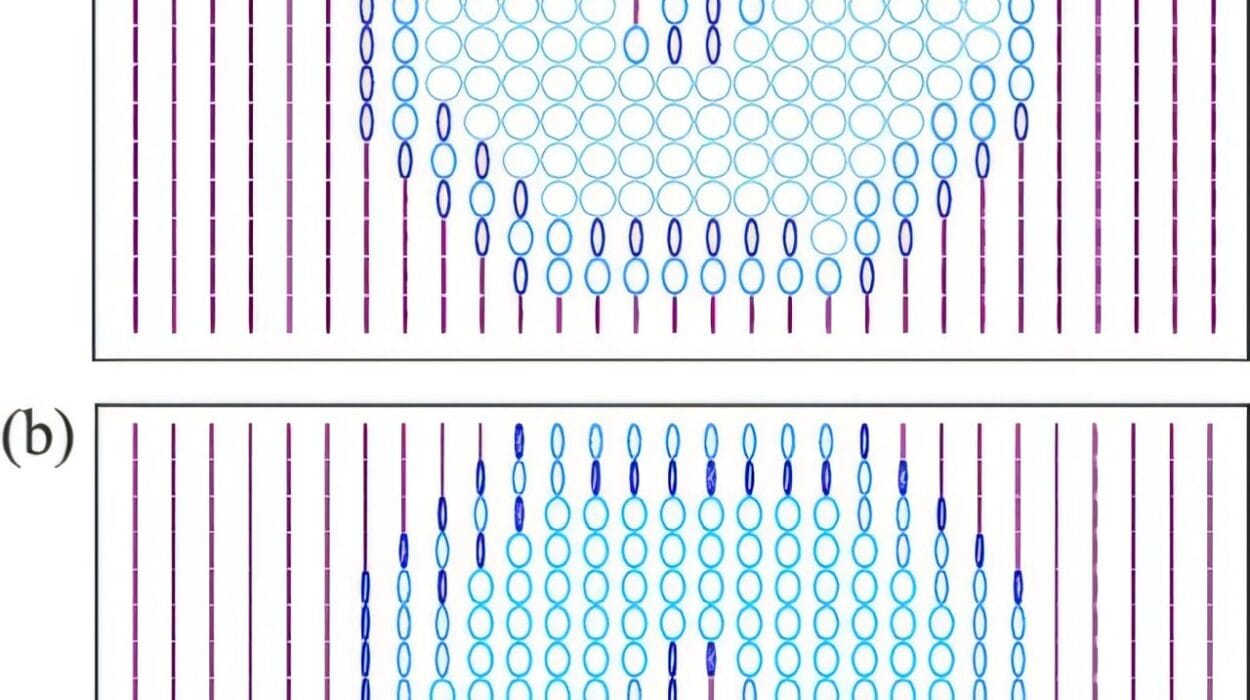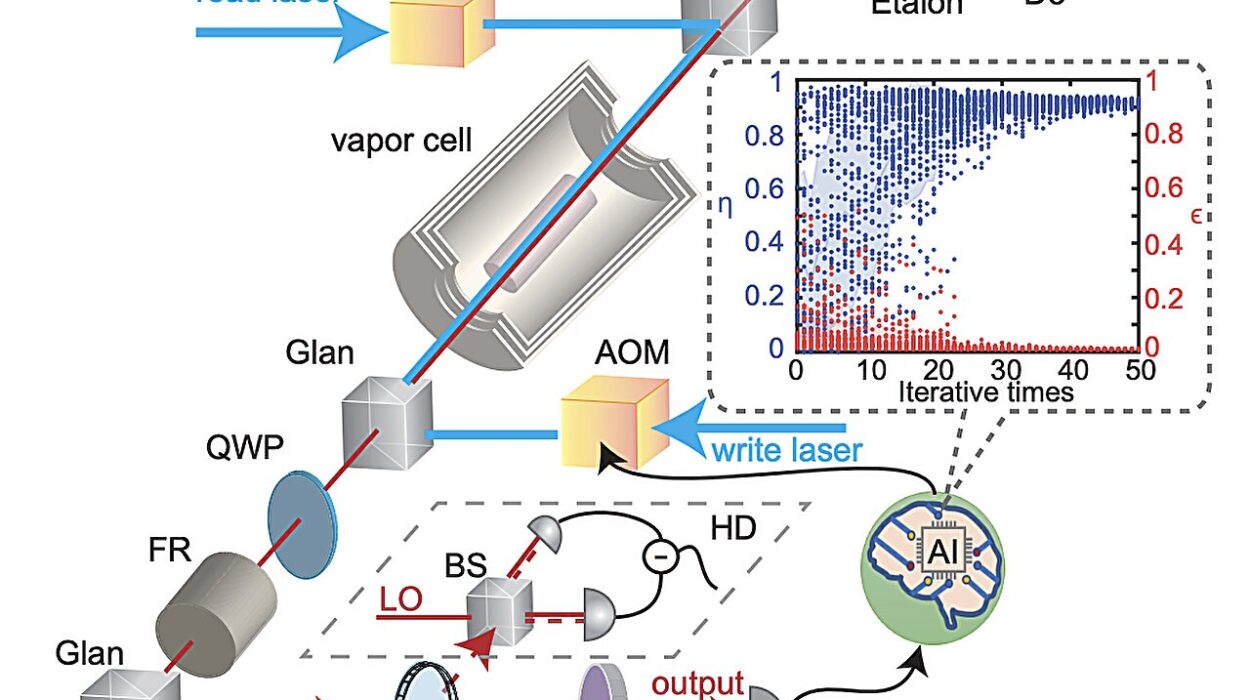In the invisible realms of magnetism, where spins sway in synchrony and energy whispers between atomic layers, synthetic antiferromagnets are proving to be more than just an engineered oddity—they are becoming the stage for a stunning quantum ballet. Recent research from a collaboration led by Tohoku University has uncovered a remarkable phenomenon within these materials, hinting at deeper and more elegant laws governing magnetic behavior. The revelation? A mysterious and beautiful splitting of magnetic resonance—akin to Rabi oscillations—born not of broken symmetry but from the pure, intricate play of nonlinear dynamics.
Synthetic antiferromagnets, or SAFs, may sound esoteric, but they are carefully crafted marvels of material science. Built from alternating layers of ferromagnetic materials—each with magnetic moments pointing in opposite directions—and separated by non-magnetic spacers, these structures are the embodiment of balance. Like twin dancers mirroring each other’s every move, the layers act in perfect counterpoint. This symmetry is more than aesthetic—it profoundly shapes how these materials respond to forces and frequencies that agitate their internal spins.
When Stillness Starts to Sing: The Precession of Spins
When external forces such as radio-frequency (RF) currents disturb the quiet alignment of magnetic moments in SAFs, the internal order doesn’t collapse—it begins to move, rhythmically. The magnetization of each layer starts to precess, or rotate, around its stable direction, creating a dynamic landscape within what once seemed static. This movement isn’t chaotic; it’s highly structured, manifesting in what physicists call “collective spin oscillation modes.”
There are two such fundamental modes in synthetic antiferromagnets: acoustic and optical. The acoustic mode is akin to both magnetic layers spinning in harmony—same direction, same rhythm. It’s like a duet sung in perfect unison. The optical mode, by contrast, is dissonant yet balanced—each layer rotates in opposite directions, like a cosmic tug-of-war where neither side ever wins.
These two modes don’t just describe how the system vibrates; they reveal how energy flows and how information might one day be carried across devices made not of silicon, but of spins.
Rabi-Like Splitting: A Signature of Secret Communication
In their recent study published in Physical Review Letters, researchers led by Shigemi Mizukami and Dr. Aakanksha Sud reported an observation that sent ripples through the world of magnetism: a Rabi-like splitting in the acoustic resonance of a synthetic antiferromagnet. For those familiar with quantum optics, Rabi oscillations describe the coherent exchange of energy between two quantum states—usually seen in atoms interacting with light. But here, that same language of coherent coupling was emerging in a magnetic material, with no photons involved, and—most strikingly—no broken symmetry.
Under carefully tuned experimental conditions, the researchers applied RF currents to a synthetic antiferromagnet and observed the spectral peak of the acoustic mode splitting into two distinct signals. This wasn’t a subtle shift—it was a dramatic, unmistakable sign that something fundamental was occurring: the acoustic and optical modes, usually distinct, were beginning to speak to one another.
But how could this be? Traditionally, strong coupling between modes requires some form of asymmetry—some structural imbalance or perturbation that “breaks” the system’s natural symmetry and allows energy to flow in unconventional ways. Yet the SAF in this experiment was structurally symmetric. The answer, the researchers discovered, lay in a deeper realm of physics.
The Role of Magnons: Quasiparticles in Conversation
At the quantum scale, the magnetic excitations in these materials aren’t just spins wobbling—they can be described as quasiparticles called magnons. Think of magnons as ripples in the magnetic field, or more poetically, as packets of spin energy moving through the material like waves through water. When magnons interact, especially under strong nonlinear conditions, they can create new phenomena, including hybridization between distinct modes.
In this study, the coupling wasn’t linear. It wasn’t a simple matter of mode A shaking hands with mode B. Instead, it involved three-magnon interactions—a nonlinear dance where energy and motion are exchanged in complex combinations. The experiment revealed that such interactions can cause the acoustic and optical modes to hybridize, splitting the acoustic resonance into two peaks. The system had effectively created a bridge between the two modes, allowing them to exchange energy in a way previously thought impossible without structural imbalance.
This observation is groundbreaking. It shows that symmetry need not be sacrificed for coupling to occur. Nature, as it turns out, has more subtle mechanisms for complexity than we often give her credit for.
Experiment at the Edge: Probing the Nonlinear Frontier
To uncover this effect, the research team had to go beyond traditional techniques. They used a method known as RF rectification, a clever electrical strategy that allows scientists to both excite and detect magnetic resonances within a material. By applying an RF current whose frequency was precisely half of the optical mode’s resonance, they created conditions ripe for nonlinear interaction. Under these specific frequencies, the acoustic mode began to split—revealing the elusive Rabi-like signature.
The symmetry of the SAF was preserved throughout. What changed was the energy landscape created by the driving RF field. The system, though balanced in structure, entered a nonlinear regime where the rules of interaction shifted dramatically. And in this new regime, magnons began to talk to each other in ways never observed before.
The team’s collaboration with theoretical physicist Dr. K. Yamamoto further confirmed their findings. Simulations showed that the observed splitting was not a fluke—it was a direct result of three-magnon interactions, and it occurred without breaking symmetry.
From Fundamental Physics to Future Technologies
This discovery is more than just a curiosity. It has real implications for the future of magnonics—a field of research focused on using magnons to carry and process information. Unlike electrons, which generate heat and resistance as they move through traditional circuits, magnons can propagate through a material with much lower energy loss. They hold the promise of building computers that are faster, cooler, and more efficient—not to mention fundamentally different in how they process data.
By demonstrating that nonlinear magnon coupling can occur in symmetric systems, this study opens up new possibilities for device design. Systems that were previously thought too balanced to allow strong coupling can now be reconsidered. This could simplify engineering constraints and lead to new architectures for magnonic devices.
Moreover, the ability to manipulate magnon interactions using only electrical currents—and without introducing structural defects or asymmetries—could lead to dynamically tunable systems. This is critical for building reconfigurable computing elements, such as those envisioned in neuromorphic computing, where circuits mimic the adaptive, nonlinear processing of the human brain.
The Road Ahead: From Standing Waves to Traveling Thoughts
As the dust settles on this groundbreaking study, new questions rise. One direction the team is exploring is how nonlinear coupling affects not just standing wave resonances—the type observed in this study—but propagating magnons. These traveling spin waves, if coupled and controlled with the same nonlinear mechanisms, could form the basis of long-range magnonic circuits and even quantum-inspired networks.
“We are now considering how nonlinear coupling affects propagating magnons,” said Mizukami. “This will deepen our understanding and help us design scalable, low-power platforms for spintronic and neuromorphic computing.”
Dr. Sud added, “We plan to develop new device architectures to control magnon propagation through material design and nanofabrication. This is about more than physics—it’s about creating a whole new class of information technology.”
A Symphony of Spins, Composed by Nature
What makes this discovery so compelling is not just its technical novelty, but its poetic depth. In the heart of a symmetric, balanced system, where no asymmetry cries out for attention, a hidden conversation begins—magnons whispering across layers, spinning in tandem and in opposition, exchanging energy not out of necessity, but out of possibility.
The Rabi-like splitting observed in synthetic antiferromagnets is more than a spectral feature. It is a symbol of nature’s complexity, of the profound patterns that emerge when we listen closely. It reminds us that even in the most symmetrical systems, there can be richness, surprise, and interaction—if only we probe deeply enough and tune our instruments to the right frequency.
In a world increasingly built on information and energy, discoveries like this don’t just expand our knowledge—they expand our imagination.
Reference: Electrically controlled nonlinear magnon-magnon coupling in a synthetic antiferromagnet. Physical Review Letters(2025). DOI: 10.1103/sc6y-rxbg.
